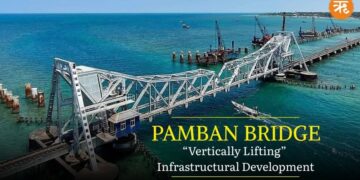The first Treaty of Allahabad was signed on August 12, 1765, between Mughal Emperor Shah Alam II and Robert Clive, a representative of the East India Company. This treaty granted the British the Diwani rights (revenue collection) of Bengal, Bihar, and Orissa, marking the beginning of British dominance in India. The treaty also restored Shuja-ud-Daula as the Nawab of Awadh, while the districts of Allahabad and Kara were handed over to Shah Alam. Additionally, British soldiers were to assist the Nawab of Awadh, and the East India Company agreed to pay Shah Alam an annual pension of Rs 26 lakh, while enjoying tax-free trade in these regions.
The First Treaty of Allahabad was signed on 12 August 1765
– This treaty was signed between Mughal Emperor Shah Alam II and East India Company representative Robert Clive
– Under this treaty, Shah Alam gave the British the right of Diwani of Bengal, Bihar and Orissa
Vikram Sarabhai, born on August 12, 1919, in Ahmedabad, is revered as the father of India’s space program. An accomplished physicist and astronomer, he founded the Indian Space Research Organization (ISRO). Coming from an educated and prosperous family, with his father Ambalal Sarabhai being a renowned industrialist, Vikram Sarabhai pursued higher education at Cambridge University, earning a bachelor’s and a doctorate in science. Under his leadership, India’s first satellite, Aryabhata, was launched in 1975. Sarabhai was instrumental in establishing various scientific institutions in India and promoting science and technology. He passed away on December 30, 1971, and was posthumously awarded the Padma Bhushan in 1966 and the Padma Vibhushan in 1972.
Vikram Sarabhai was born on August 12, 1919 in Ahmedabad
– Sarabhai is considered the father of the Indian space program
– He started the Indian Space Research Organization (ISRO)
On August 12, 1948, independent India won its first Olympic medal by clinching gold in hockey. The Indian hockey team, consisting of 15 players, participated in the London Olympics, which began on July 29, 1948. India dominated the tournament, defeating Austria 8-0 and Argentina 9-1 in the early matches. In the final, India faced Great Britain and secured a decisive 4-0 victory. This triumph marked India’s fourth consecutive Olympic gold in hockey and the first time the Indian tricolor proudly flew on British soil after independence. Despite the loss of many key players to Pakistan, the Indian team showcased exceptional talent and determination.
On August 12, 1948, independent India won its first Olympic medal
– The Indian hockey team won the gold medal by defeating Great Britain
– India defeated Britain 4-0
On August 12, 1981, IBM launched its first personal computer, the IBM 5150, priced at $1565. This groundbreaking computer came with a main system unit, keyboard, monitor, printer, and memory card. Prior to 1980, IBM primarily manufactured mini and mainframe computers, which were expensive and cumbersome. To create a more portable and affordable option, IBM tasked lab director Bill Lowe with developing a personal computer. Lowe assembled a team of 12 experts to handle hardware, software, sales, and marketing. Within a year, the IBM 5150 was ready and launched, marking a significant milestone in the computing world.
August 12, 1981 IBM launched its first personal computer
– The name of this computer was IBM 5150
– The price of this computer was 1565 dollars
– The computer had a main system unit, a keyboard, monitor, printer and memory card
On August 12, 1877, Thomas Edison invented the phonograph, a groundbreaking device capable of recording and reproducing sound. This invention marked the first time sound could be permanently recorded. Edison’s phonograph used a metal cylinder wrapped in tin foil and a stylus to create sound impressions on the cylinder. When the cylinder was played back, the needle traced these impressions, reproducing the recorded sound. Edison famously recorded himself reciting the children’s poem “Mary Had a Little Lamb,” demonstrating the device’s ability to capture and replay sound. This innovation laid the foundation for modern gramophones and record players.
On August 12, 1877, Thomas Edison invented the phonograph
– The phonograph is a device that can record and reproduce sound
– It is now called the gramophone and record player
On August 12, 1851, Isaac Merritt Singer patented his revolutionary sewing machine. Developed by his company, Singer, the machine quickly gained popularity for its durability and ease of use. Singer designed the machine in just 11 days, and it was originally priced at $10. The hand-operated machine transformed sewing by making it faster and more efficient, benefiting both domestic and industrial uses. By 1860, Singer’s company became the world’s largest sewing machine manufacturer. This invention not only advanced the textile industry but also created new employment and business opportunities.
On August 12, 1851, Isaac Merritt Singer patented the sewing machine
– Isaac designed the most modern sewing machine in just 11 days
– At that time, the price of a sewing machine was $10
International Youth Day is celebrated annually on August 12. Established by the United Nations in 1999 and observed since 2000, this day focuses on raising awareness about youth issues and their contributions to society. It highlights key areas like education, employment, and health, aiming to empower young people and encourage their participation in societal development. Activities such as seminars, workshops, cultural programs, and discussions are organized to inspire youth to voice their ideas and drive positive change.
International Youth Day is celebrated every year on 12 August
– Youth Day was celebrated for the first time in the year 2000
– The purpose of this day is to raise awareness about the problems and issues of youth
















Comments